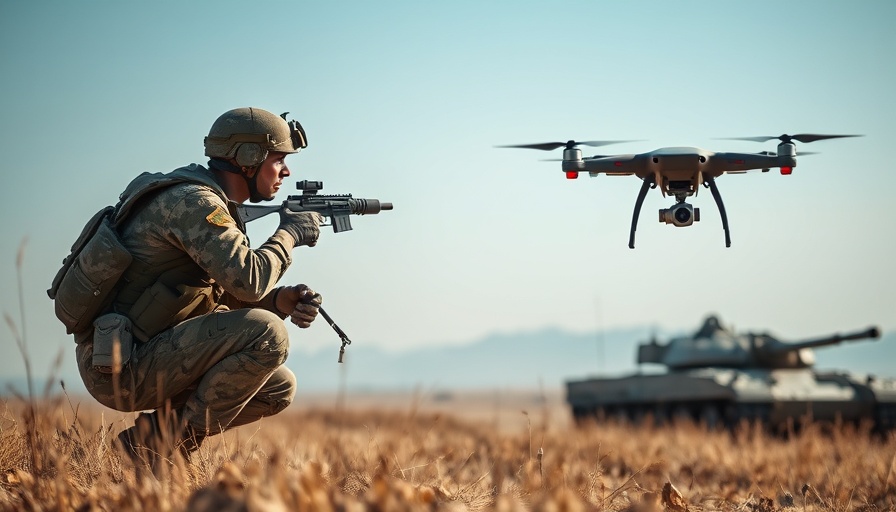
Quantum Systems: A New Era for Drone Technology in the UK
In a significant move poised to reshape the landscape of drone technology in Britain, Quantum Systems has recently announced a $60 million investment to establish its subsidiary, Quantum-Systems Ltd. UK. This investment is not only a testament to the company's commitment to British innovation but also aligns with the UK Ministry of Defence's evolving strategy for unmanned systems—an essential segment in modern defense.
Building a Local Ecosystem for Defense Innovation
Quantum Systems aims to enhance the UK's defense capabilities by investing over €50 million in the next five years into local engineering, infrastructure, and partnerships. This initiative is part of a broader vision to localize defense technologies, thereby strengthening British sovereignty in technology and job creation. By establishing a Service, Support, Training, and Logistics Center (SSTLC), the company plans to develop a well-rounded operational hub that can respond effectively to both commercial and defense needs.
A Strategic Alignment with the UK Defence Strategy
The UK Ministry of Defence has underscored the importance of integrating unmanned systems into its operational framework, delineated in their 20-40-40 strategy. Quantum Systems, with its comprehensive ISR (Intelligence, Surveillance, and Reconnaissance) drone portfolio, is positioned to significantly contribute to this schema. With about 40% of the capabilities focusing on automation and uncrewed systems, the strategic investment made by Quantum is reflective of a shifting paradigm in defense operations.
Meet Reliant: The Future of ISR Drones
Among the company’s innovations is the newly unveiled ISR drone, Reliant, presented at DSEI UK 2025. This advanced drone balances short-, medium-, and long-range aerial intelligence missions, providing a versatile tool for defense and security applications. Part of a suite controlled by Quantum's MOSAIC UXS software, Reliant showcases how Quantum is transforming aerial operations through technology and user-centric design.
Leadership Driving Change in UK Defense
At the helm of Quantum Systems UK is Vito Tomasi, a figure well-versed in defense and finance. With a background in the Royal Marines and experience in investment management, Tomasi’s leadership is seen as crucial for steering Quantum’s objectives in the UK market. His insights emphasize the commitment to not just meet the UK's defense objectives but to actively contribute to its future vision for autonomy and resilience.
Looking Forward: Strengthening the UK Defense Ecosystem
Tomasi’s strategy focuses on substantive investments in British talent and infrastructure, with an emphasis on partnering with local providers. An upcoming Memorandum of Understanding with Skyports, announced to coincide with DSEI UK 2025, signifies not just strategic collaboration but a shared vision in enhancing the UK’s unmanned systems ecosystem. Together, such partnerships aim to bolster local capabilities while reasserting the UK's position in the global defense landscape.
As the demand for autonomous systems expands, investments like those made by Quantum Systems could set a precedent for future technologies. In an era where unmanned operations are becoming central to military strategy, the UK’s emphasis on local drone capabilities signals a future where innovation and defense go hand-in-hand.
 Add Row
Add Row  Add
Add 




Write A Comment